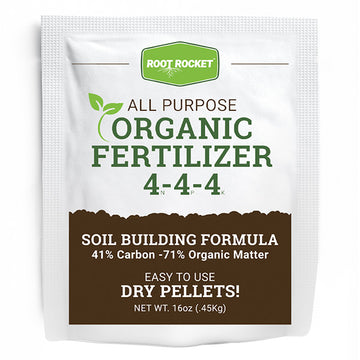When the weather outside gets frightful, there are plenty of ways to keep your garden delightful. With colder temperatures comes extra needed care to ensure your plants stay healthy and thrive throughout the season. This includes protecting your plants from frost.
Frost in late fall and early winter occurs at night when temperatures are cooler and outside air is saturated, or filled, with moisture. This process can be hard on certain plants in your garden. Luckily there are plenty of methods to ensure your frost-sensitive plants come through unscathed.
What types of plants need protection?
Whenever temperatures dip below 40˚F, it’s best to properly protect plants that need a little extra care. Though not every plant needs frost protection, (like the cold-tolerant plants mentioned later on), there are many fragile or delicate plants that require extra attention. These include:
- Annual plants that fruit and flower in warm temperatures
- Plants in pots and plants for the balcony
- Plants that are young, including newly-planted vegetables
- Plants grown in a greenhouse, or plants purchased from a garden center during the spring or summer
- Tropical indoor houseplants
- Some fruit trees
- Rose beds
- Any plants with a winter hardiness zone of 6 or above
To help keep your garden growing as long as possible, here are some ideas on how to protect plants from frost.
The Best Winter Plant Protection
The easiest way to protect plants from frost is to buy and plant cold-tolerant plants. Not only will they provide a decorative seasonal touch to your yard, but they also require very little care or extra winter plant protection.
For example, the Frost Proof Gardenia is an exceptional option for regions that are used to warmer climates but experience occasional frost in cooler seasons. Its fragrant, snowy white blossoms hold true, even after a frost.
Due to their large size, many warmer-season trees are harder to protect with coverings in the winter. However, trees that are cold-tolerant, like the Blue Wonder Colorado Spruce, don’t require any extra care. Their gray-blue foliage adds instant dimension to any landscape and its low maintenance will have you worry-free.
If you’re looking for added privacy in your yard, or maybe a single accent tree, the Nellie Stevens Holly Tree is also a low-maintenance and cold-tolerant solution. It looks great all year round, and in the winter, it yields an abundance of red berries for a seasonal pop of color.
And if you want to keep your walkway or garden beds lively in cooler temperatures the Dense Yew offers plenty of vibrant green foliage that acts as a beautiful canvas for other plants throughout the year.

Other Methods on How to Protect Plants from Frost
- Cover any heat-loving, outdoor plants. You can purchase special-made plant coverings for frost, or use found items around your home like plastic jugs, cardboard boxes, bedspreads, blankets, or large towels. No matter what you’re covering your plant with, be sure to drape them loosely over the plant and create a small dome of insulation that extends all the way to the ground. If you’re concerned about wind, add a brick or rock on top of the covering on the ground. Remove during mid-day then re-apply at night before frost occurs again.
- Move your containers indoors. This may seem obvious, but re-locate any nursery containers inside temporarily until there is no longer frost in the forecast.
- Water your plants well. Moist soil can hold up to four times more heat than dry soil. Packed and moist soil surfaces can absorb more radiant energy during the day, and release the heat during the night, thus protecting against frost. However, it’s still a good idea to add an additional cover for extra protection.
- Insulate using mulch. Plants that are small and sturdy but need extra protection can benefit from a thick layer of mulch or shredded bark. Cover the plant before low temperatures hit and remove once the weather warms again.
Cooler temperatures don’t have to mean a sparse yard. There are plenty of ways to protect your existing plants and add new, cold-tolerant plants to your landscape with little maintenance.
Check out the wide selection of products PlantingTree.com has to winterize your garden.



